Minimizing muzzle velocity variance is a key to long-range shooting precision. The following chart (taken from my forthcoming book) shows the downrange effects of typical sources of vertical error in a typical .30 caliber rifle shot. In this example, the change in vertical impact caused by a 1% change in muzzle velocity is negligible at shorter ranges, but after 1000 yards it dominates the other sources of error:
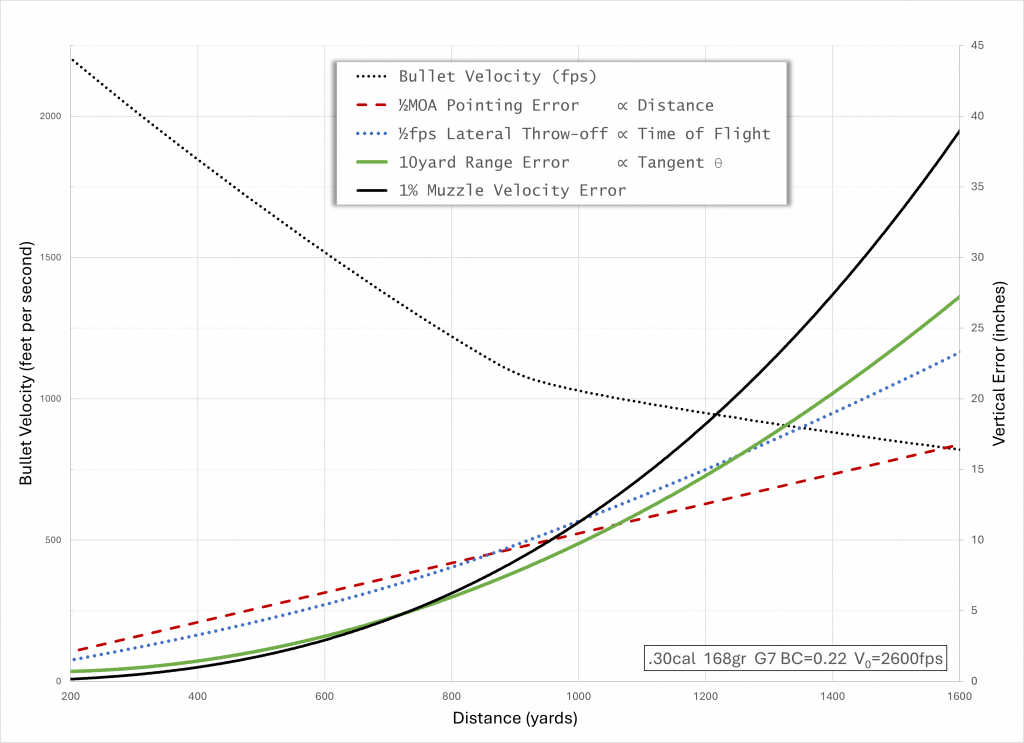
What causes muzzle velocity variance, and what can we do to reduce it? One obvious source is variation in powder charge weight. Within the range of safe powder charges, muzzle velocity shows a linear increase with the mass of powder. So precision loaders meter powder charge weights to hundredths of a grain. But even after eliminating any measurable variation in the weight and dimensions of cartridges, it is not uncommon to find the standard deviation of muzzle velocity running up to 1%.
What else is there? Jeff Siewart has identified variation in engraving force1 as a significant source of variation in muzzle velocity. What is engraving? Here are pictures of bullets, before and after being fired through a rifled barrel:
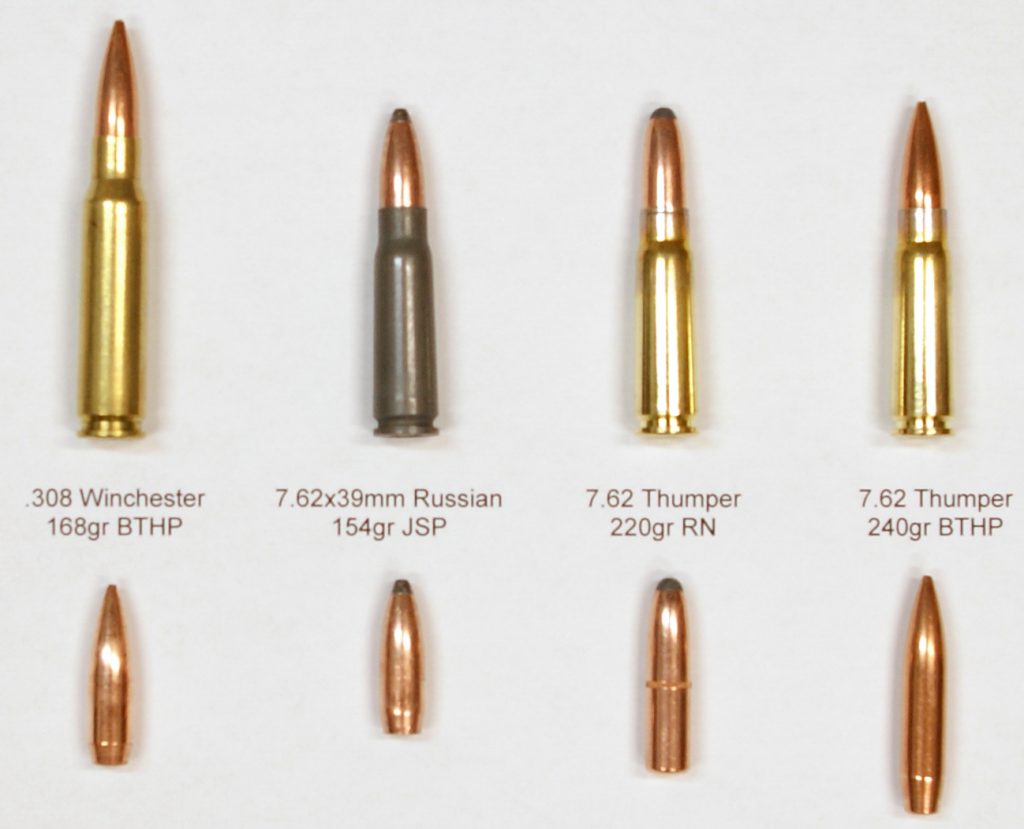
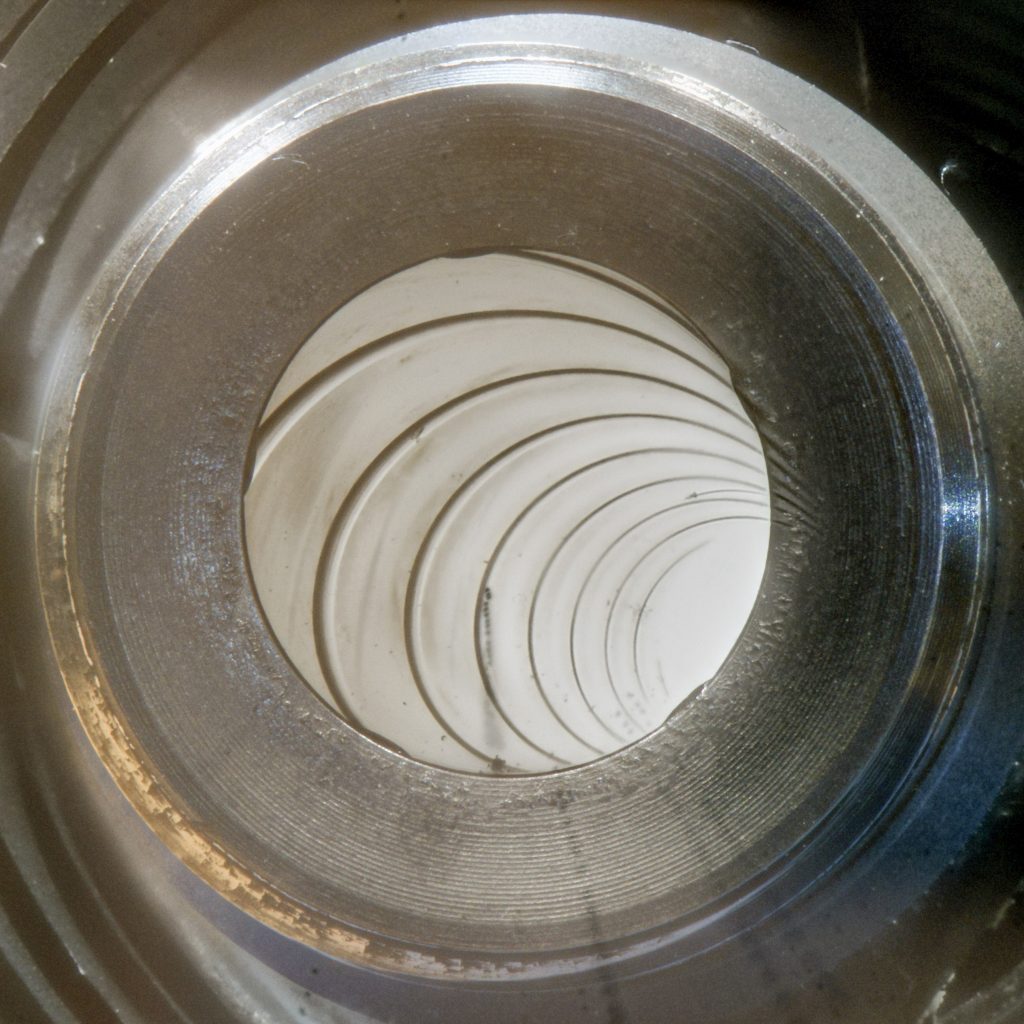
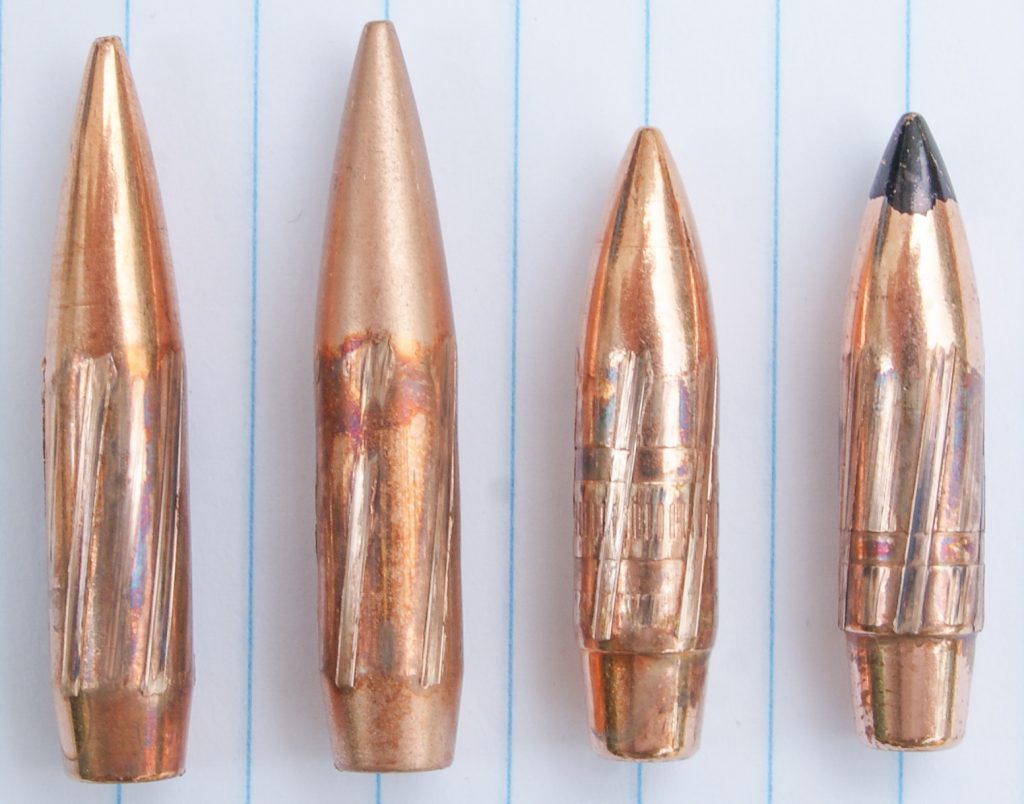
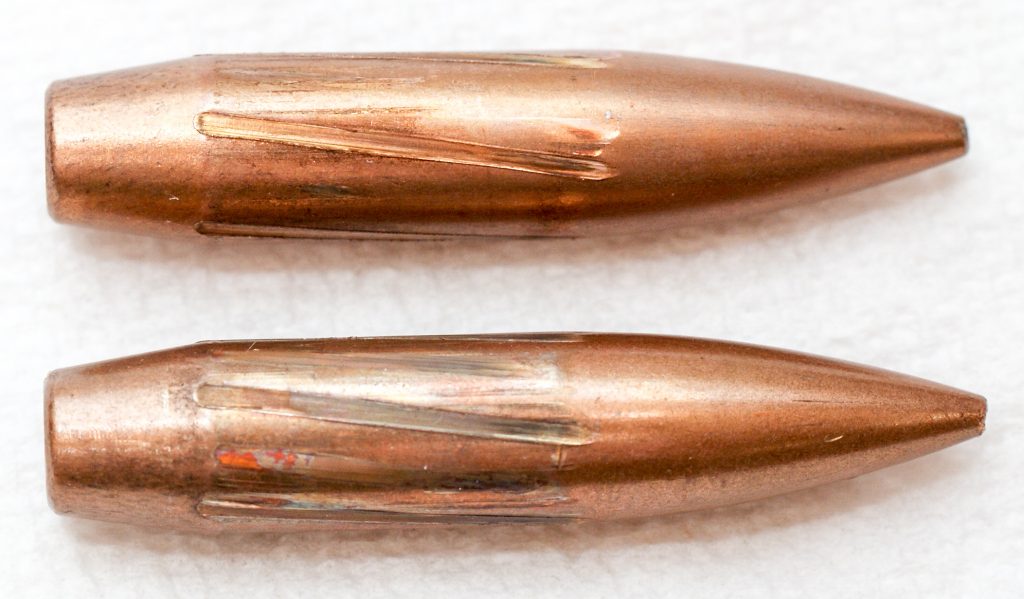
As a bullet enters a rifled barrel it has to engage and follow the rifling so that it gets spin stabilized. Engraving refers to the raised steel rifling of the barrel scraping into the surface of the bullet, as well as the entire circumference of the bullet deforming to create a tight seal with the barrel to keep the propellant gases from blowing past the bullet. Siewart has shown that the friction involved in engraving varies enough from one shot to another to cause the variations observed in muzzle velocity.
This engraving friction becomes even more significant in subsonic rifle rounds because (a) they are longer, which increases the surface area that must be engraved; and (b) they are fired at lower pressures and velocities, so the same variations in engraving force are a larger proportion of the total internal ballistic impulse.
Can we reduce friction?
There are two established ways of reducing friction between bullet and bore. One is to reduce the bearing surface area of the bullet that contacts the barrel. A notable example of this approach was the addition by Barnes Bullets of cannelures to its solid copper bullet, which markedly increased its shooting precision.2 The following photo shows how these cannelures reduce the engraved surface area (as well as providing more relief for material displaced by engraving):

The other method of reducing friction is lubrication. Ten years ago I did extensive testing of various bullet and barrel lubricants in subsonic .30 bullets. Some of these did measurably reduce friction and improve shooting precision: Rydol’s “polysonic” treatment and Dyna-Tek’s “Nano-Ceramic” coating. Impact-plating with hBN (hexagonal boron nitride) did not. This is described in detail here. I didn’t test but would also expect the established MoS2 (“moly”) and WS2 (tungsten disulfide) bullet coatings to produce the same benefits.
1 See §Peak Engraving Pressure Variation, p.5 in November 2023 paper, “Using an Error Budget Approach to Estimate Muzzle Velocity Variation.”
2 See pp.4-6 in December 2020 paper, “What causes Dispersion.”
